
The World Cinema Project (WCP) preserves and restores neglected films from around the world. To date, 67 films from Africa, Asia, Eastern Europe, Central America, South America, and the Middle East have been restored, preserved and exhibited for a global audience. The WCP also supports educational programs, including Restoration Film Schools; intensive, results-oriented workshops allowing students and professionals worldwide to learn the art and science of film restoration and preservation. All WCP titles are available for exhibition rental by clicking "Book This Film."
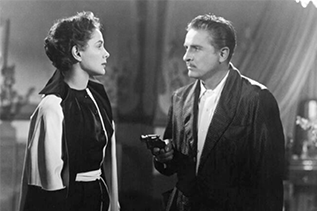
ÉL
Director: Luis Buñuel
WRITTEN BY: Luis Buñuel, Luis Alcoriza
EDITING: Carlos Savage
DIRECTOR OF PHOTOGRAPHY: Gabriel Figueroa
ADAPTED BY: Luis Buñuel, Luis Alcoriza
PRODUCER: Óscar Dancigers
PRODUCTION DESIGN: Edward Fitzgerald
STARRING: Arturo de Córdova, Delia Garcés, Aurora Walker, Carlos Martínez Baena, Manuel Dondé, Rafael Banquell, Fernando Casanova, Luis Beristáin
COUNTRY OF PRODUCTION: Mexico
LANGUAGE: Spanish with English subtitles
COLOR INFO: Black and White
RUNNING TIME: 82 minutes
PRODUCER: Óscar Dancigers
Restored by The Film Foundation's World Cinema Project, Les Films du Camélia and Cineteca di Bologna at L'Immagine Ritrovata Laboratory, with the support of OCS and in association with Películas y Videos Internacionales.
Special thanks to Guillermo del Toro.
Funding provided by the Material World Foundation.
NOTES ON THE RESTORATION:
The 4K restoration used the dupe positive preserved by Películas y Videos Internacionales at the Filmoteca de la UNAM, where the scan was performed. Color grading was supervised by Gabriel Figueroa Flores.
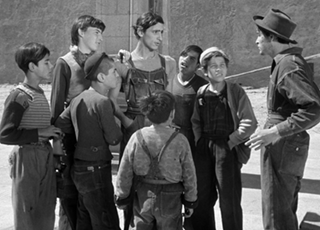
LOS OLVIDADOS
Director: Luis Buñuel
WRITTEN BY: Luis Buñuel, Luis Alcorira
EDITING: Carlos Savage
DIRECTOR OF PHOTOGRAPHY: Gabriel Figueroa
PRODUCER: Óscar Dancigers, Sergio Kogan, Jaime A. Menasce
MUSICAL DIRECTOR: Rodolfo Halffter
STARRING: Estela Inda, Miguel Inclán, Alfonso Mejía, Roberto Cobo, Alma Delia Fuentes
COUNTRY OF PRODUCTION: Mexico
LANGUAGE: Spanish with English subtitles
COLOR INFO: B&W
RUNNING TIME: 80 minutes
PRODUCER: Óscar Dancigers, Sergio Kogan, Jaime A. Menasce
Restored by The Film Foundation's World Cinema Project in collaboration with Fundacion Televisa, Televisa, Cineteca Nacional Mexico, and Filmoteca de la UNAM.
Restoration funding provided by The Material World Foundation.
NOTES ON THE RESTORATION:
LOS OLVIDADOS was restored in 4K from the camera and soundtrack nitrate negatives preserved at Filmoteca de la UNAM. The film reels were scanned at UNAM laboratory and the soundtrack was digitized by Cineteca Nacional de México.
Special thanks to Gabriel Figueroa Flores for his supervision of the grading process.
The restoration work was carried out by L'Immagine Ritrovata in 2019.
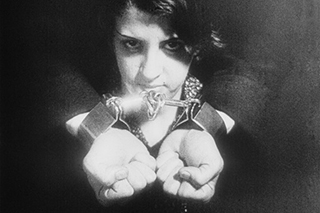
LIMITE
Director: Mário Peixoto
WRITTEN BY: Mário Peixoto
EDITING: Mário Peixoto
DIRECTOR OF PHOTOGRAPHY: Edgar Brazil
PRODUCER: Mário Peixoto
MUSICAL DIRECTOR: Brutus Pedreira (themes from Satie, Debussy, Borodin, Stravinsky, Prokofiev)
ASSISTANT DIRECTOR: Rui Costa
FROM: Cinemateca Brasileira, São Paulo
STARRING: Olga Breno (Woman #1); Taciana Rei (Woman #2); Carmen Santos (The Whore); Mario Peixoto (The Man at the cemetery); Brutus Pedreira (Man #2 and the pianist); Edgar Brazil (The Man asleep at the cinema); Faciana Rei; Raul Schnoor
COUNTRY OF PRODUCTION: Brazil
LANGUAGE: Silent
COLOR INFO: Black and White
RUNNING TIME: 120 minutes
PRODUCTION COMPANY: Cinédia
PRODUCER: Mário Peixoto
Restored in 2010 by the Cinemateca Brasileira and Cineteca di Bologna/L’Immagine Ritrovata laboratory, in association with The Film Foundation’s World Cinema Project, Arquivo Mario Peixoto, Saulo Pereira de Mello, and Walter Salles. Restoration funded by Armani, Cartier, Qatar Airways and Qatar Museum Authority.
Limite does not intend to analyse. It shows. It projects itself as a tuning fork, a pitch, a resonance of time itself. –Mário Peixoto
Then came the revelation of Limite, the first and only film by 21-year-old director Mário Peixoto. This was a film of transcendent poetry and boundless imagination. Once again, I found myself in a state of shock, not only because of the film itself, which was made in 1931 and forgotten for many years, but also for the evidence it bore, that of our creative diversity. –Walter Salles
NOTES ON THE RESTORATION:
Restored by the World Cinema Foundation at Cineteca di Bologna / L’Immagine Ritrovata Laboratory in collaboration with the Cinemateca Brasileira and Walter Salles.
Image: © Courtesy of Mário Peixoto Archive/ Cinemateca Brasileira
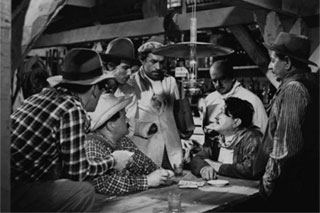
PRISIONEROS DE LA TIERRA
Director: Mario Soffici
WRITTEN BY: Ulyses Petit de Murat, Darío Quiroga
EDITING: Gerardo Rinaldi, José de Nico
DIRECTOR OF PHOTOGRAPHY: Pablo Tabernero
MUSICAL DIRECTOR: Lucio Demare
PRODUCTION DESIGN: Ralph Pappier
STARRING: Ángel Magaña (Esteban Podeley), Elisa Galvé (Andrea), Francisco Petrone (Köhner), Homero Cárpena, Raúl De Lange, Roberto Fugazot
COUNTRY OF PRODUCTION: Argentina
LANGUAGE: Spanish and Guaranì with English subtitles
COLOR INFO: Black and White
RUNNING TIME: 85 minutes
PRODUCTION COMPANY: Pampa Films
Restored by Cineteca di Bologna at L’Immagine Ritrovata and The Film Foundation’s World Cinema Project in association with the Museo del Cine Pablo Ducros Hicken with elements provided by the Cinémathèque Française and the Narodni Filmovy Archiv.
Funding provided by the Hobson/Lucas Family Foundation.
NOTES ON THE RESTORATION:
PRISIONEROS DE LA TIERRA was restored using the best existing elements: a first generation 35mm positive print held at La Cinémathèque française and a recently rediscovered third generation 35mm positive print preserved by the Narodni Filmovy Archiv. For its overall completeness and photographic quality, the first generation 35mm positive print was used to restore the image, while the third generation 35mm positive print was the primary source for sound restoration.
A 16mm dupe negative, provided by the Museo del Cine, has been also been studied and compared as a reference. Color grading was supervised by Paula Félix Didier, director of the Museo del Cine Pablo Ducros Hicken.
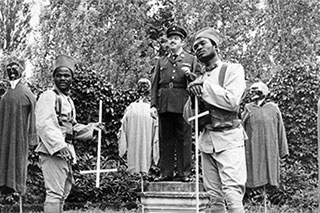
SOLEIL Ô
OH, SUN!
Director: Med Hondo
WRITTEN BY: Med Hondo
EDITING: Michèle Masnier, Clément Menuet
DIRECTOR OF PHOTOGRAPHY: François Catonné, Jean-Claude Rahaga
STARRING: Robert Liensol, Théo Légitimus, Gabriel Glissand, Mabousso Lô, Alfred Anou, Les Black Echos, Ambroise M’Bia, Akonio Dolo
COUNTRY OF PRODUCTION: Mauritania
LANGUAGE: French with English subtitles
COLOR INFO: Black and White
RUNNING TIME: 98 minutes
PRODUCTION COMPANY: Grey Films, Shango Films
SET DESIGNER: Med Hondo
Restored by Cineteca di Bologna at L’Immagine Ritrovata laboratory in collaboration with Med Hondo. Restoration funded by the Hobson/Lucas Family Foundation and The Film Foundation’s World Cinema Project.
This restoration is part of the African Film Heritage Project, an initiative created by The Film Foundation’s World Cinema Project, the Pan African Federation of Filmmakers and UNESCO – in collaboration with Cineteca di Bologna – to help locate, restore, and disseminate African cinema.
I identify with Med Hondo in terms of anger and I share his obsession with history and self-reliance.
--Haile Gerima
When I wrote my script I did not have an audience in mind, I was living in France and experiencing what being a minority felt like. I had to yell and free myself. Writing the script of Soleil Ô was an authentic act of rage and liberation.
Once the script was ready, I gathered a crew of technicians and a team of African actors. Then I went to see some film processing companies and told them “Here I am, I don’t have a penny in my pocket but I want to make a film, let me have some raw film, I will reimburse you on an installment plan, and if I fail to do so you can put me in jail.” They agreed. The film cost $ 30,000 and it took almost two years to shoot because my actors were not always available.
There are different perceptions of an image. Soleil Ô is crystal clear and is neither intellectual nor sophisticated. It has often happened that those who understood it best were illiterate. When it was shown in Algeria, because the audience was completely able to identify with the film, the proletarians explained it to the intellectuals.
My main character could be a garbage collector, a student, or a teacher. His status does not prevent him from being affected in the same manner by the general conditions of history within a racist society. To be a Black expatriate is an identity. Soleil Ô derives from the African oral tradition. It depicts a unique reality. There is no dichotomy between style and content; here it is the content which imposes a style. I wanted to describe several people through one person instead of using a group of people. In my country, when people talk about a specific issue, they may digress and come back to their initial topic. Black cultures have a syntax which has nothing to do with Cartesian logic or that of other civilizations.
-- Med Hondo
NOTES ON THE RESTORATION:
The restoration of Soleil Ô was made possible through the use of a 16mm reversal print, and 16mm and 35mm dupe negatives deposited by Med Hondo at Ciné-Archives, the audiovisual archive of the French Communist Party, in Paris.
The reversal print was scanned at 4K and digital restoration eliminated dirt, scratches and mold. Despite excellent photographic quality overall, a few sequences appear slightly out-of-focus; this is true to the original cinematography.
A vintage 35mm print preserved at the Harvard Film Archive was used as a reference. Color grading was supervised by cinematographer François Catonné.
The original 16mm magnetic tracks were used for the audio restoration. After digitization, the soundtrack was cleaned and background noise reduction eliminated all noticeable wear marks; particular attention was devoted to the specific dynamics and features of the original soundtrack, namely percussion and chants. Reel 4 as well as the main and end titles were missing, so these were restored using the original 35mm soundtrack. The latter was also used to replace the 16mm mag tracks in the parts where the mix differed slightly from the vintage 35mm print.
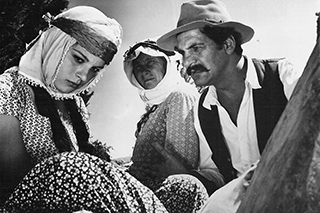
DRY SUMMER
SUSUZ YAZ
Director: Metin Erksan
WRITTEN BY: Necati Cumali, Metin Erksan Kemal Ínci, Ísmet Soydan
EDITING: Turgut Ínangiray
DIRECTOR OF PHOTOGRAPHY: Ali Ugur
PRODUCER: Ulvi Dogan
MUSICAL DIRECTOR: Ahmet Yamaç
SOUND: Turgut Ínangiray
STARRING: Ulvi Dogan (Hassan), Erol Tas (Osman), Hülya Koçyigit (Bahar)
COUNTRY OF PRODUCTION: Turkey
LANGUAGE: Turkish with French and English subtitles
COLOR INFO: Black and White
RUNNING TIME: 75 minutes
PRODUCER: Ulvi Dogan
Restored in 2008 by Cineteca di Bologna/L’Immagine Ritrovata laboratory, in association with The Film Foundation’s World Cinema Project, Ulvi Dogan, and Fatih Akin. Additional elements provided by the Friedrich Wilhelm Murnau Stiftung. Restoration funded by Armani, Cartier, Qatar Airways and Qatar Museum Authority.
Dry Summer is a film of passion. A passion for water as well as the obsessive passion created by forbidden love. […] Dry Summer is a film of captivity… Authorities at the time objected to Dry Summer representing Turkey overseas, which presented all kinds of obstacles when the film came to the Berlin Film Festival. The film walked away with the Golden Bear, but before success could even be celebrated it was ‘taken captive’ and completely forgotten for the next 45 years. Today, in these times of intellectually dry summers, when greed is driving humanity to the brink of starvation, this film could hardly be more valid. Dry Summer is one of the most important legacies of Turkish cinema, and thanks to restoration it can be re-discovered by the next generations of audiences all over the world. –Fatih Akin, May 2008
NOTES ON THE RESTORATION:
The restoration of Susuz Yaz used the original 35mm camera negative and the original 17.5 mm sound negative and recaptured the black and white film’s tonal nuances. The film’s producer, Ulvi Dogan, provided the prints. An interpositive preserved at the Friedrich Wilhelm Murnau Stiftung in Wiesbaden was used for the negative’s last missing reel. The opening and closing credits, missing from all available sources, have been digitally reconstructed.
Image: © Courtesy of Ulvi Doğan
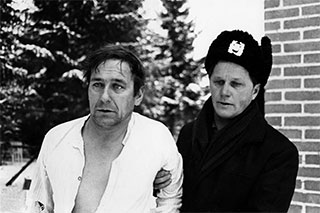
EIGHT DEADLY SHOTS
KAHDEKSAN SURMANLUOTIA
Director: Mikko Niskanen
WRITTEN BY: Mikko Niskanen
DIRECTOR OF PHOTOGRAPHY: Mikko Niskanen
STARRING: Tarja-Tuulikki Tarsala, Mikko Niskanen, Paavo Pentikäinen, Tauno Paananen. Elina Liimatainen, Ari Vainiontaus, Mauno Argillander, Sulo Hokkanen
COUNTRY OF PRODUCTION: Finland
LANGUAGE: Finnish with English subtitles
COLOR INFO: Black and White
RUNNING TIME: 316 minutes
Restored by The Film Foundation's World Cinema Project, Yleisradio Oy, Fiction Finland ry, and Fondazione Cineteca di Bologna at L'Immagine Ritrovata laboratory. Funding provided by the Hobson/Lucas Family Foundation. Additional support provided by The Ministry of Culture and Education in Finland, Tiina and Antti Herlin Foundation, and the Jane and Aatos Erkko Foundation.
NOTES ON THE RESTORATION:
EIGHT DEADLY SHOTS was originally broadcast in Finland as a 4-part television series by the national public broadcasting company of Finland, YLE. The late film historian and filmmaker Peter von Bagh first discovered and disseminated the work of Mikko Niskanen and was a tireless advocate for this film's restoration. Due to von Bagh's championing, Niskanen is recognized as one of Finland's most revered auteurs.
The digital restoration was completed using a 4K scan of the original 16mm one perforation A/B roll negatives preserved by Yleisradio Oy.
In addition to digital restoration, and in order to be as faithful as possible to the original 16mm look and texture, a new fine grain was created and used to generate a duplicate negative. Finally, two new 35mm prints were struck for circulation and preservation.
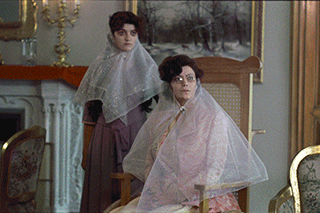
CHESS OF THE WIND
SHATRANJ-E BAAD
Director: Mohammad Reza Aslani
WRITTEN BY: Mohammad Reza Aslani
EDITING: Abbas Ganjavi
DIRECTOR OF PHOTOGRAPHY: Houshang Baharlou
PRODUCER: Bahman Farmanara
MUSICAL DIRECTOR: Sheyda Gharachedaghi
ART DIRECTOR: Houri Etesam
STARRING: Fakhri Khorvash, Shohreh Aghdashloo, Shahram Golchin, Mohamad Ali Keshavarz, Hamid Taati, Akbar Zanjanpour
COUNTRY OF PRODUCTION: Iran
LANGUAGE: Farsi
COLOR INFO: Color
RUNNING TIME: 93 minutes
PRODUCER: Bahman Farmanara
Restored by The Film Foundation’s World Cinema Project and Cineteca di Bologna at L’Image Retrouvée laboratory (Paris) in collaboration with Mohammad Reza Aslani and Gita Aslani Shahrestani. Restoration funding provided by the Hobson/Lucas Family Foundation.
Shatranj-e Baad might be one of the most emblematic films in the history of Iranian cinema, even though its visibility was limited to a disastrous preview at Tehran International Film Festival in 1976. Due to an artistic conflict between Aslani and the festival curator, the projection was sabotaged, its reels were disrupted and projector malfunctioned. The critics walked out during the screening, as did the jury who pulled the film out of the competition. Instantly deemed elitist, the film was refused by all the distributors. Discouraged, the producer didn’t bother sending the film to the international festivals. In subsequent private showings, Henri Langlois, Roberto Rossellini and Satyajit Ray had the opportunity to see the film in proper condition and congratulated the young director. After that, Shatranj- e Baad, was never screened again. Following the establishment of the Islamic government in 1979, the film was banned because of its non-Islamic content and the reels were subsequently declared lost. There was only a censored VHS, of very poor quality, circulating through informal channels. Although the film rested in obscurity for a long time, its aesthetic value was rediscovered in 2000 by a new generation of critics and cinéphiles who classed it as one of Iran’s lost cinematic masterpieces. Shatranj-e Baad is a singular film, at the confluence of the aesthetics of Visconti and Bresson. The influence of painting can be found in each shot and the careful screenplay toys with multiple plot twists. It was only in 2015 that Aslani found the negatives of Shatranj-e Baad, quite by chance at a flea-market for vintage film costumes and accessories. He bought the reels and immediately sent them to France where they could safely be restored. Now we can fully rediscover all the originality and modernity of this fascinating film, which has spent almost 45 years in the shadows.
- Gita Aslani Shahrestani
NOTES ON THE RESTORATION:
The 4K restoration of CHESS OF THE WIND was completed using the original 35mm camera and sound negatives. Color grading required meticulous work, notably reels 9 and 10 which called for an orange-tinting effect reminiscent of early silent cinema. The restoration was closely supervised by Gita Aslani Shahrestani and Mohammad Reza Aslani; the film's cinematographer Houshang Baharlou also contributed to the grading process.
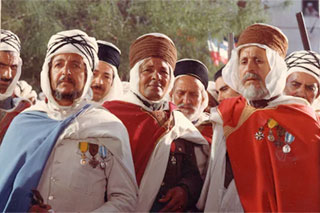
CHRONICLE OF THE YEARS OF FIRE
WAQAI SANAWAT AL-DJAMR
Director: Mohammed Lakhdar-Hamina
WRITTEN BY: Rachid Boudjedra, Tewfik Fares, Mohammed Lakhdar-Hamina
DIRECTOR OF PHOTOGRAPHY: Marcello Gatti
MUSICAL DIRECTOR: Philippe Arthuys
STARRING: Yorgo Voyagis (Ahmed), Mohammed Lakhdar-Hamina (Milud), Leïla Shenna (moglie di Ahmed), Cheikh Nourredine (Si Larbi), Larbi Zekkal (Smaïl), Sid Ali Kouiret, Nadia Talbi, Taha El Amiri, Abdelhalim Rais, Brahim Hadjadj, Hassan El Hassani
COUNTRY OF PRODUCTION: Algeria
LANGUAGE: Arabic and French with English subtitles
COLOR INFO: Color
RUNNING TIME: 177 minutes
PRODUCTION COMPANY: ONCIC (Office National Commerce Industrie Cinéma)
Restored by The Film Foundation’s World Cinema Project and Cineteca di Bologna at L’Image Retrouvée and L’Immagine Ritrovata laboratories. Restoration funded by the Hobson/Lucas Family Foundation.
This restoration is part of the African Film Heritage Project, an initiative created by The Film Foundation’s World Cinema Project, the Pan African Federation of Filmmakers and UNESCO – in collaboration with Cineteca di Bologna – to help locate, restore, and disseminate African cinema.
I tried to recount, with dignity and nobility, this uprising that then became the Algerian Revolution, an uprising not only against the coloniser, but against a certain human condition. I wanted to avoid any kind of Manichaean, caricatural and demagogic approach, which risked turning Waqai sanawat al-djamr into a sort of Western; good against evil, Algerians against French. What guided me was the quest for honesty: I looked inside myself for the honesty of a child, the eyes of the child I once was, the memories of my childhood. […] It would be a serious mistake to distinguish Algerian Cinema, the cinema of the Maghreb, from African Cinema. The cinema of the Third World is one – the Arab World, Africa, Latin America, the Middle East, Asia – as we share the same motivations, the same difficulties, and a common destiny, on an artistic level and on an expressive level. We have suffered hunger and thirst. We will reclaim our image.
Mohammed Lakhdar-Hamina, interviewed by Claude Dupont, “Cahiers de la cinémathèque”,
Summer 1975
NOTES ON THE RESTORATION:
Restored in 4K from the original camera and sound negatives and a first generation 35mm interpositive provided by the filmmaker.
Three different cuts exist of this film: upon Mohammed Lakhdar-Hamina's wish, this restoration reconstructed the version that was awarded the Palme d'or at the Cannes Film Festival in 1975.
The original camera negative, outtakes from the same element, and the interpositive were integrated to match a 35mm vintage print provided by the filmmaker as a reference. Color grading was supervised by Mohammed Lakhdar-Hamina.

STARS IN BROAD DAYLIGHT
NUJUM AL-NAHAR
Director: Ossama Mohammed
WRITTEN BY: Ossama Mohammed
EDITING: Antoinette Azarieh
DIRECTOR OF PHOTOGRAPHY: Abdulqader Sharbaji
STARRING: Abdellatif Abdul Hamid, Zuhair Abdulkarim, Sabah As-Salem, Saad Eddin Baqdoones, Fuad Ghazi, Muhsen Ghazi, Radwan Jamoos, Zuhair Ramadan, Maha Saleh
COUNTRY OF PRODUCTION: Syria
LANGUAGE: Arabic with English subtitles
COLOR INFO: Color
RUNNING TIME: 105 minutes
PRODUCTION COMPANY: National Film Organization
Restored by The Film Foundation’s World Cinema Project and Cineteca di Bologna at L’Immagine Ritrovata laboratory, in collaboration with Ossama Mohammed. Funding provided by the Hobson/Lucas Family Foundation.
NOTES ON THE RESTORATION:
The restoration used the best surviving element outside Syria, a 35mm positive print acquired by a German television network in the 1990s. Ossama Mohammed approved the grading. Restoration work was completed in 2024 by L’Immagine Ritrovata.
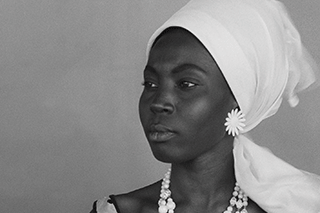
BLACK GIRL
LA NOIRE DE...
Director: Ousmane Sembène
WRITTEN BY: Ousmane Sembène
EDITING: André Gaudier
DIRECTOR OF PHOTOGRAPHY: Christian Lacoste
ASSISTANT CAMERAMAN: Ibrahima Barro
STARRING: Mbissine Thérèse Diop, Anne-Marie Jelinek, Robert Fontaine, Momar Nar Sene, Ibrahima Boy
COUNTRY OF PRODUCTION: Senegal
LANGUAGE: French with English Subtitles
COLOR INFO: B&W
RUNNING TIME: 65 minutes
PRODUCTION COMPANY: Les Films Domirev
Restored by Cineteca di Bologna/ L’Immagine Ritrovata laboratory, in association with the Sembène Estate, Institut National de l’Audiovisuel, INA, Eclair laboratories and the Centre National de Cinématographie. Restoration funded by The Film Foundation’s World Cinema Project.
Black Girl, or La Noire de…, was the first of Ousmane Sembène’s pictures to make a real impact in the west, and I can clearly remember the effect it had when it opened in New York in 1969, three years after it came out in Senegal. An astonishing movie—so ferocious, so haunting, and so unlike anything we’d ever seen.
- Martin Scorsese, May 2015
I am not for “social realism” nor for a “cinema of signs” with slogans and demonstrations. For me revolutionary cinema is something else. If we managed to set up a group of cinéastes who all make cinema directed in the same direction, I believe that then we could influence a little bit of the destinies of our country. I think that the film, more than the book, can crystallize an awakening within the masses. I am personally inspired much by the example of Brecht.
- Ousmane Sembène
In 1961, shortly after Senegal declared its independence from France, Ousmane Sembène, a self-educated dockworker, assigned himself an impossible task: to create a true African cinema as a “night school” for his people. is explosive debut—a film described as the first African feature (true in spirit, if not in fact)—inspired a form of fearless, socially engaged, and uncompromising cinema across the globe. La Noire de … (Black Girl) follows a young girl lured to France by a white bourgeoisie couple, who keep her locked in their flat as a housekeeper. As the daily and unrelenting indignities unfold, Diouana, the title character, literally loses her voice. Sembène highlights her silence, familiar to the voiceless across the globe, yet reveals Diouana’s immense dignity and, by the end, agency. He draws visually from the French Nouvelle Vague (in a film about racial and class divides, the black-and-white photography carries new power) and spiritually from the Italian neorealists, but the film’s heart and soul is African. By turning around the camera—used for 100 years to demean Black people—Sembène offers us the first humanistic gaze at Africans.
But the film (shot mostly in Dakar) also remains a seminal work of cinematic art, as it unfolds with startling precision and decisiveness, providing revealing, unforgettable and richly metaphoric perspective on a never-beforeseen Africa. La Noire de … became a sensation at festivals from Carthage to Pyongyang, and Sembène became the first non-French recipient of the Prix Jean Vigo, given previously to Alain Resnais, Chris Marker, Claude Chabrol and Jean-Luc Godard. In the film’s culminating moment, a boy grabs a mask and haunts the white businessman who entrapped Diouana. As this child pulls the mask from his face, we wonder: Will a new Africa emerge? Nearly 50 years after its initial screenings, the visionary La Noire de … remains a gorgeous, shocking and of-the-moment African story.
- Samba Gadjigo and Jason Silverman
NOTES ON THE RESTORATION:
The restoration of La Noire de… was made possible through the use of the original camera and sound negative provided by INA and the Sembène Estate and preserved at the CNC – Archives Françaises du Film.
In order to try and minimize the presence of visible spots (due to processing errors and aggravated by time) and scratches on the image, the camera negative was wet-scanned at 4K resolution. Due mainly to these two issues, the digital restoration required considerable efforts. A vintage print preserved at the Cinémathèque Française was used as reference.
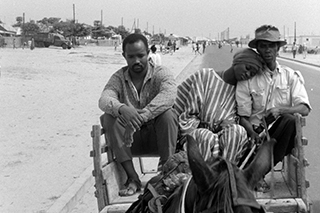
Borom Sarret
Director: Ousmane Sembène
WRITTEN BY: Ousmane Sembene
EDITING: Andre Gaudier
DIRECTOR OF PHOTOGRAPHY: Christian Lacoste
ASSISTANT CAMERAMAN: Ibrahima Barro
FROM: INA/Éclair/Cineteca/Sembene Family
STARRING: Ly Abdoulay, Albourah
COUNTRY OF PRODUCTION: Senegal
LANGUAGE: French and Wolof
COLOR INFO: Black and White
RUNNING TIME: 22'
ON COMPANY: INA
Restored in 2013 by Cineteca di Bologna/L’Immagine Ritrovata laboratory and Laboratoires Éclair, in association with The Film Foundation’s World Cinema Project, the Institut National de l’Audiovisuel, and the Sembène Estate. Restoration funded by Doha Film Institute.
I think given the fact that there is such a diversity of languages in Africa, we, African filmmakers, will have to find our own way in order to ensure that the message be understood by everyone, or we’ll have to find a language that comes from the image and the gestures. I think I would go as far as to say that we will have to go back and see some of the silent films and in that way find new inspiration.
Contrary to what people think, we talk a lot in Africa but we talk when it’s time to talk. There are also those who say blacks spend all of their time dancing – but we dance for reasons which are our own.
Dancing is not a flaw in itself, but I never see an engineer dancing in front of his machine, and a continent or a people do not spend its time dancing.
All of this means that the African filmmaker’s work is very important – he must find a way that is his own, he must find his own symbols, even create symbols if he has to.
[...] I then realized Borom Sarret, my first true short film. It is the story of a cartman who is, to some extent, the taxi driver of a horse-drawn cart. Confronted by a rich customer in a residential district prohibited to such a type of vehicle, a cop stops him, makes a complaint, and seizes the cart. Relieved of his livelihood, the poor fellow remains sadly in his place. His wife entrusts the guardianship of their children to him while saying to him “We will eat this evening…” For this I got the first work prize at the Festival of Tours in 1963.
-Ousmane Sembène
NOTES ON THE RESTORATION:
The restoration of Borom Sarret was made possible through the use of the original camera and sound negatives provided by INA and preserved at Éclair Laboratories.
The film was scanned in 4K at Éclair Laboratories and restored at L’Immagine Ritrovata laboratory. The image was digitally stabilized and cleaned, and all wear marks were eliminated. Image grading helped recover the richness of the original cinematography.
After scanning, the sound was digitally cleaned and background noise reduction was applied to eliminate all wear marks, without losing any of the dynamic features of the original soundtrack.
The World Cinema Foundation would like to specially thank Alain Sembène and the Sembène Family for facilitating the restoration process.
Image: © Courtesy of INA
